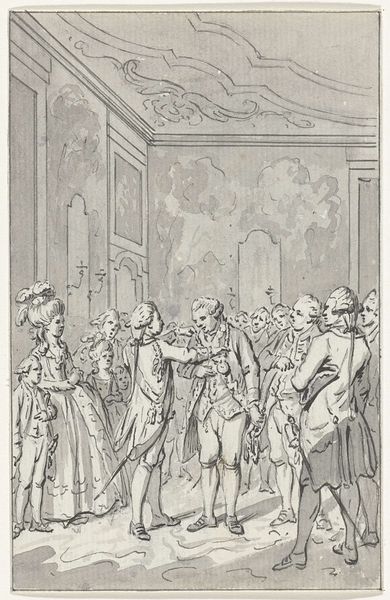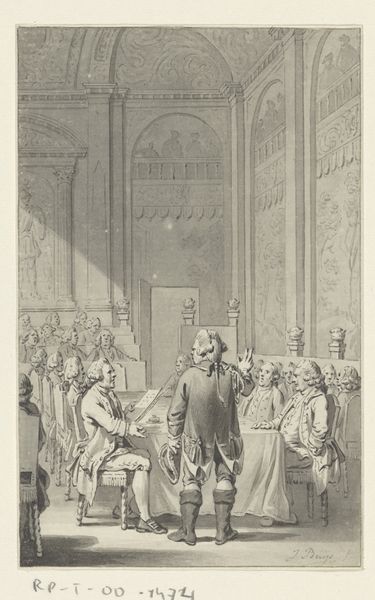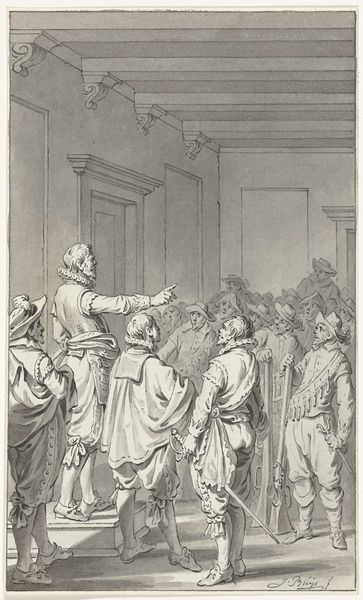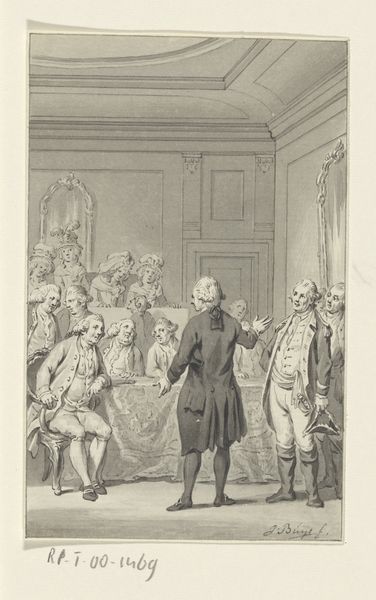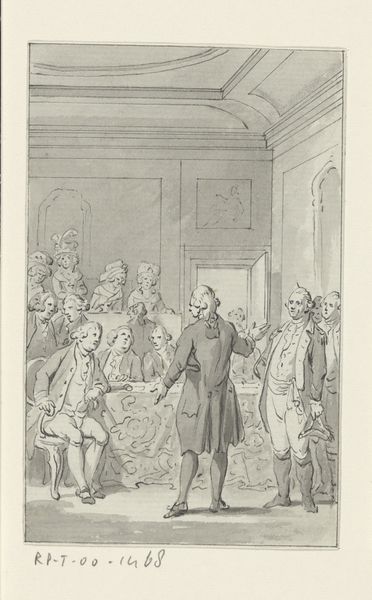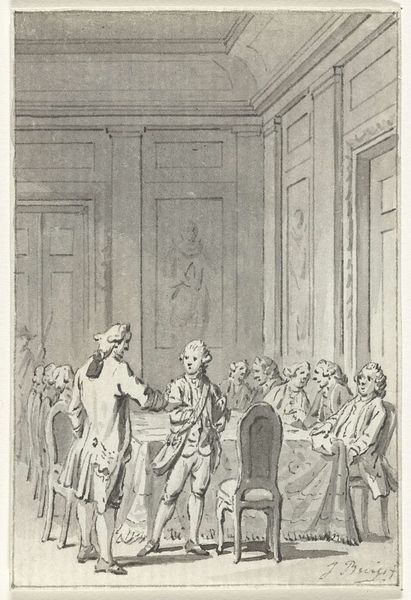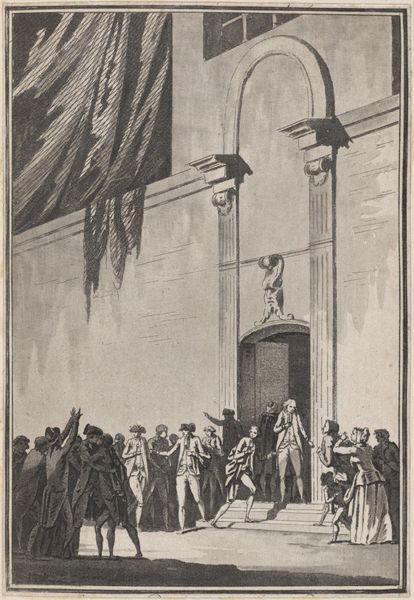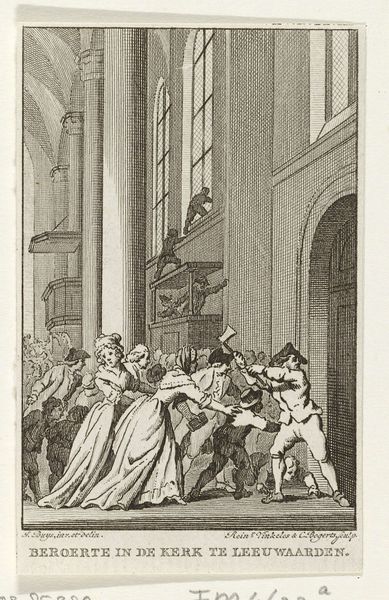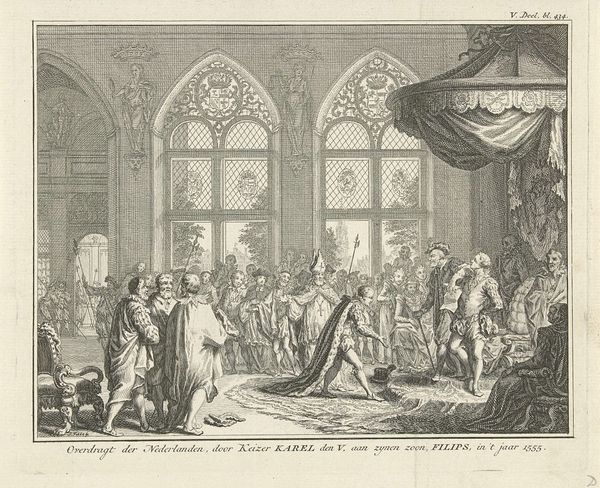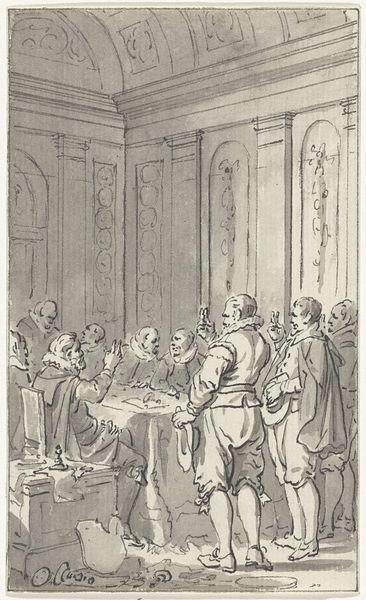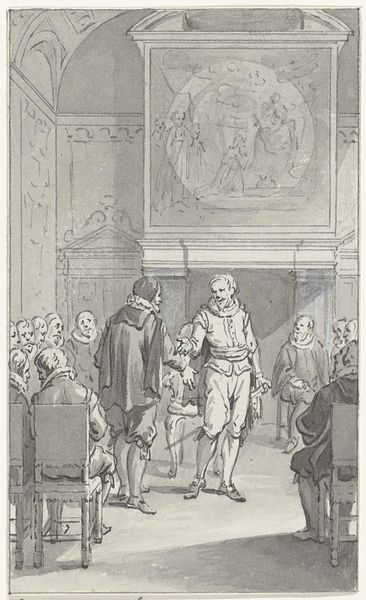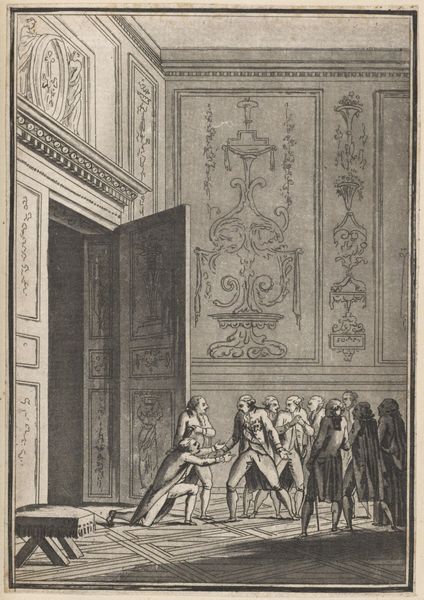
Hollandse kooplieden bieden een klaagschrift aan aan Anna van Hannover, prinses van Oranje-Nassau, 7 december 1758 1758 - 1801
0:00
0:00
jacobusbuys
Rijksmuseum
Dimensions: height 143 mm, width 91 mm
Copyright: Rijks Museum: Open Domain
Editor: Here we have a drawing by Jacobus Buys, dating sometime between 1758 and 1801, titled "Hollandse kooplieden bieden een klaagschrift aan aan Anna van Hannover, prinses van Oranje-Nassau, 7 december 1758," rendered in ink on paper. The scene depicts merchants presenting a document to a princess, and it all feels very formal and a bit tense. What do you see in this piece? Curator: The drawing captures a pivotal moment where commerce intersects with political power. This exchange speaks volumes about the role of merchant classes in 18th-century Dutch society, a time when the economic grievances of these individuals were significant enough to warrant an audience with royalty. Do you notice how the composition emphasizes the spatial divide, highlighting the inherent power dynamic at play between the merchants and Princess Anna? Editor: Yes, the architectural details definitely create a sense of hierarchy, and it feels amplified by the number of merchants facing one individual. Curator: Precisely. By positioning Princess Anna within a grand interior, Buys visually reinforces her authority, but consider the merchants themselves. How would you interpret their stance, their posture, and what they’re hoping to accomplish in that very moment? Editor: I see a plea for redress, a quiet act of defiance maybe? Their clothing seems very... uniform almost. Is that deliberate? Curator: Absolutely, the relative plainness could be interpreted as a deliberate choice, intended to emphasize their unity and collective identity as merchants rather than individuals. It speaks to a desire to be heard as a unified body, challenging the aristocratic status quo and advocating for their shared economic interests. Consider what this meeting meant during the specific moment of Dutch history it represents. Editor: It’s amazing how a simple ink drawing on paper can speak volumes about societal power structures. I'll never look at art from the 18th century in the same way again. Curator: Exactly! Art provides these incredible insights into history, if we allow it. Examining pieces through social and political contexts allows them to engage in ongoing dialogue with the present.
Comments
No comments
Be the first to comment and join the conversation on the ultimate creative platform.
